-
11.6-inch Windows 8 Laptop-Tablet Hybrid HP Envy X2 Review
Posted on September 3rd, 2012 No commentsOn the IFA 2012 trade show, HP released its first Windows 8 laptop-tablet hybrid, namely Sony Envy X2. Just like other electronic manufacturers who have released hybrid laptop-tablet, Envy X2 owns both laptop and tablet forms. When connected with keyboard during using, this new device is no difference from a laptop. While disconnected with keyboard, it is a portable tablet just like the new iPad. The overall configuration of this new hybrid tablet is very attractive, including: a 11.6-inch touch screen with 1366×768 pixels screen resolution makes it quite wonderful for watching HD videos/DVD on Sony Envy X2; adopts the next generation of Intel Clover Trail processor with 2GB RAM and 64GB SSD space; the latest Windows 8 operating system; dual camera with a main 8MP camera on the rear; Beats audio technique for high quality audio effect, etc.
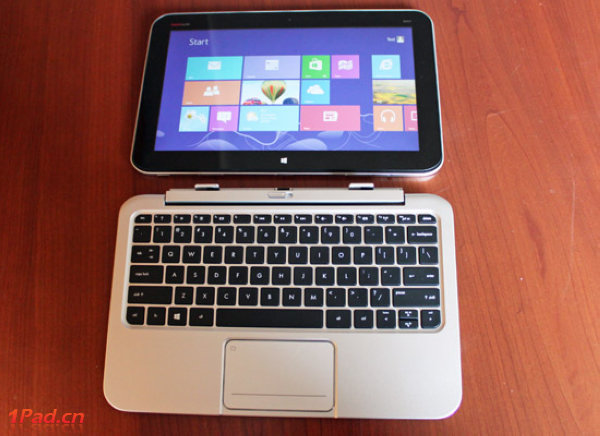 On appearance, HP Envy X2 comes in aluminum alloy shell, solid and smooth. The whole tablet body thickness is only 8.4mm and weights about 680g, while connected to keyboard the tablet would be a little heavier than 1400g. The 11.6-inch touch screen display supports multi-touch capacitive touch control, with front camera for video chatting on the right upper. While from the back side, there is a big hp logo, with an 8MP main camera and LED flashlight for picture and video shooting on the head part. The inconvenient thing might be that the separate design of power button and volume adjusting button which are separately designed on different sides.
On appearance, HP Envy X2 comes in aluminum alloy shell, solid and smooth. The whole tablet body thickness is only 8.4mm and weights about 680g, while connected to keyboard the tablet would be a little heavier than 1400g. The 11.6-inch touch screen display supports multi-touch capacitive touch control, with front camera for video chatting on the right upper. While from the back side, there is a big hp logo, with an 8MP main camera and LED flashlight for picture and video shooting on the head part. The inconvenient thing might be that the separate design of power button and volume adjusting button which are separately designed on different sides.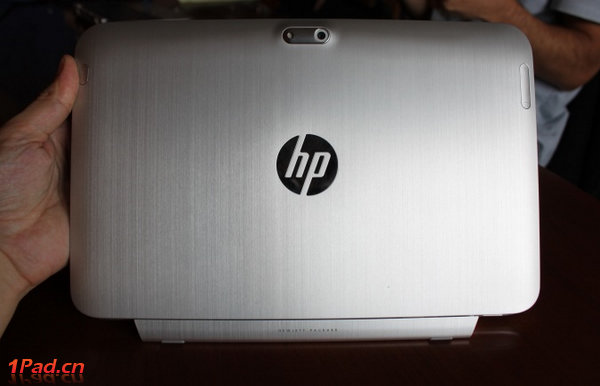 The bottom of the tablet has a data port to connect with keyboard. The bottom flanks are magnetic card slots to connect with keyboard, while the 3.5mm headset jack locates on the rightmost. The keyboard left flank respectively arranges a HDMI port, a USB3.0 port and a 3.5mm audio jack, while the right flank contains a USB3.0 port and an expandable port with a coverable SD card slot at the bottom. The keyboard of Envy X2 is quite similar to other Windows 8 laptop-tablet hybrid – standard full QWERTY design with touchpad. Such kind of design produces an overall terse feel for keyboard, though.
The bottom of the tablet has a data port to connect with keyboard. The bottom flanks are magnetic card slots to connect with keyboard, while the 3.5mm headset jack locates on the rightmost. The keyboard left flank respectively arranges a HDMI port, a USB3.0 port and a 3.5mm audio jack, while the right flank contains a USB3.0 port and an expandable port with a coverable SD card slot at the bottom. The keyboard of Envy X2 is quite similar to other Windows 8 laptop-tablet hybrid – standard full QWERTY design with touchpad. Such kind of design produces an overall terse feel for keyboard, though.займ на карту rusbankinfo.ru
-
All things about Windows 8: Windows 8 Release Date, Editions, Features, Prices
Posted on August 23rd, 2012 No comments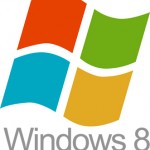 After long time of waiting and experiencing various versions, we finally welcomed the official announcement of the release and shipment availability of Windows 8. As an operating system for use on personal computers, Windows 8 could be applied to home and business desktops, laptops, tablets, and home theater PCs. It is part of the Windows NT family of operating systems and succeeds Windows 7.
After long time of waiting and experiencing various versions, we finally welcomed the official announcement of the release and shipment availability of Windows 8. As an operating system for use on personal computers, Windows 8 could be applied to home and business desktops, laptops, tablets, and home theater PCs. It is part of the Windows NT family of operating systems and succeeds Windows 7.According to the Windows Design Team, Windows 8 has been “reimagined from the chipset to the user experience,” whereas Windows 7 was intended to be a more focused, incremental upgrade to the Windows line. Windows 8 is reported to feature a new user interface based on Microsoft’s Metro design language, similar to that in Windows Phone. Also, Microsoft announced that the new OS would remove some old features of Windows OS line and add some new features. What indeed the Windows 8 would bring to the world then? Let’s just get a brief summary for Windows 8.
Release date
Windows 8 was first announced in January 2011 at Consumer Electronics Show. During its development and test phases, Microsoft released three pre-release versions: Developer Preview version (September 13, 2011), Consumer Preview version (February 29, 2012), and Release Preview version (May 31, 2012). On August 1, 2012, Windows 8 graduated from the development stage and was released to manufacturing. Windows 8 is slated for general availability on October 26, 2012.
Editions
Windows 8 is available in four major editions: Windows 8, Windows 8 Pro, Windows 8 Enterprise, and Windows RT. The first three have almost the same hardware requirements as that of Windows 7. The latter, however, runs on tablet computers with ARM architecture and has different hardware requirements. The other editions are not available in retail. The new Windows RT edition will only be available preinstalled by OEMs on ARM-based devices while the Enterprise edition will only be available through volume licensing. Hardware vendors willing to receive Microsoft’s certification for such devices need to adhere to a list of certification requirements.
Features
Metro
Based on Microsoft’s Metro design language, Metro UI is by far the biggest change in Windows 8, and can be the most confusing to use at first—especially for desktop users. The Metro environment features a new tile-based Start screen similar to that of the Windows Phone operating system. Each tile represents an application, and can display relevant information such as the number of unread messages for an e-mail application or the current temperature on a weather application. These applications run in full-screen or in docked modes, and are able to share information between each other using “contracts”. They will be available only through Windows Store. Apps in the new interface are developed with the new Windows Runtime platform using various programming languages, including C++, Visual Basic, C#, and HTML with JavaScript code-behind.The traditional desktop environment for running desktop applications is accessed via a tile on the new Start screen. The Start button has been removed from the taskbar in favor of a Start button on the new charm bar, as well as a hotspot in the bottom-left corner. Both open the new Start screen, which replaces the Start menu.
Applications developed for this new environment were previously referred to as “Metro-style apps” in development materials, connecting it to Windows 8’s use of an interface following the Metro design language as its primary desktop. However, reports surfaced that due to potential trademark issues with the German company Metro AG, Microsoft officials had begun to advise its Windows developers to stop using the term. A Microsoft spokesperson however, denied these reports and stated that the use of the term “Metro” to describe these apps was merely a codename that would be phased out. Following these reports, Microsoft started using “Modern UI Style” to refer to its tile-based interface and design language.
PowerShell 3.0
PowerShell is Microsoft’s strategic task automation platform and a core component of the overall management framework for Windows. Version 3 has been in beta for some time but the final version is included with Windows 8 (and Windows Server 2012 which has also been released to manufacturing).
Other features
* Internet Explorer 10 is included as both desktop program and as a touch-optimized app. The latter does not support plugins or ActiveX components, but includes a version of Adobe Flash Player that is optimized for touch and low power usage and works only on sites included on a whitelist.
* It is now possible to log into Windows using a Microsoft account (formerly known as a Windows Live ID). This will allow the user’s profile and settings to be synchronized over the Internet and accessible from other computers running Windows 8, as well as integration with SkyDrive.
* Windows Store will be the only method of purchasing and downloading Metro-style apps, as well as advertising desktop apps. Metro-style apps are installed from the Windows Store, or in the form of a Line Of Business app on devices joined in a network domain.
* Two new authentication methods have been added: picture password, which allows users to log in by drawing three gestures in different places on a picture, and PIN log in, which allows users to authenticate using a four digit pin.
* File Explorer will include a ribbon toolbar, and have its file operation progress dialog updated to provide more detailed statistics, the ability to pause file transfers, and improvements in the ability to manage conflicts when copying files.
* Hybrid Boot will use hibernation technology to allow faster startup times by saving the Windows core’s memory to the hard disk and reloading it upon boot.
* Windows To Go will allow Windows 8 Enterprise to boot and run from a bootable USB device (such as a flash drive).
* Two new recovery functions are included, Refresh and Reset. Refresh restores all Windows files to their original state while keeping settings, files, and apps, while reset takes the computer back to factory default condition.
* USB 3.0 is now supported natively.
* A new lock screen displays a clock and notifications while the computer is locked.
* Task Manager has been redesigned.
* Xbox Live integration (including Xbox Live Arcade, Xbox SmartGlass, Xbox Music, and Xbox Video).
* Storage Spaces will allow users to combine different sized hard disks into virtual drives and specify mirroring, parity, or no redundancy on a folder-by-folder basis.
* Family Safety is intended to allow parents to protect their children on the Internet, as well as monitor and control their PC and Internet activities and usage.
* Windows Defender now has anti-virus capabilities, similar to those of Microsoft Security Essentials. It is intended to replace the Security Essentials package and function as the default anti-virus program.
Price
Microsoft recently started accepting registrations for Windows 8 upgrades. Those who purchased a PC any time after June 2 can now sign up to receive the Windows 8 upgrade for $14.99 when the OS is released on Oct. 26.
Back in May, Microsoft announced that anyone who purchased a Windows 7 PC between June 2, 2012 and Jan. 31, 2013 could upgrade to Windows 8 Pro for $14.99. Registration for that offer is now live via windowsupgradeoffer.com for PC users in 140 countries. On Oct. 26, Microsoft will start sending out promo codes via email. When you upgrade via Windows.com, Microsoft will display the $39.99 price for general upgrades; enter the promo code on the confirmation page to get the $14.99 price. The promo code will expire until Feb. 28, 2013.
Those who bought a PC before June 2 or have an older Windows 7 PC they’d like to upgrade can get Windows 8 Pro for $39.99 via Windows.com starting Oct. 26. There are also reports that standalone copies of Windows 8 will cost $69.99 at launch, a price that will jump to $199 after Jan. 31, 2013.
After selecting your country, Microsoft will ask you to register your personal details and information about your new PC, including date of purchase, retailer, and PC brand and model. You’ll also need your 25-digit Windows 7 product key.
займ на карту rusbankinfo.ru
-
Preview of Windows Phone 8 features before Windows Phone Developers Conference
Posted on June 20th, 2012 No commentsMicrosoft has just released its first tablet PC Surface days ago on the June 18th event. With the approaching of Windows Phone Developer’s Conference on Wednesday in San Francisco, what will Microsoft bring to us? Will we see the official release of Windows Phone 8? Well, even though Microsoft has been mute on the conference plan, it is for sure that the company will launch the Windows Phone 8 operating system. Riding a wave of momentum generated by the Surface tablet unveiled on Monday, Microsoft will be outlining plans for Windows Phone 8 on Wednesday as part of the company’s push to take on Apple and Google in the mobile market. Now, the concerns about Windows Phone 8 in fact should be what features of Windows Phone 8 will be introduced by Microsoft on the conference, but not whether it would be launched or not. The latest report from WPCentral’s Daniel Rubino has unveiled some exclusive information about Windows Phone 8 features, including consolidating Skype greatly, built-in Nokia maps, Windows Phone wallet, and more native codes for developers, etc. Check the following content to get the most possible features of Windows Phone 8 might include.
Upgrade apps on Windows Phone 7: Not long before, some Microsoft stuff said all Windows Phone could be upgraded to Windows Phone 8 Apollo. But Microsoft cleared the rumors by claiming that the “upgrade” in fact means all apps on the existing Windows Phone 7 could be used on the new OS. It’s believed that Microsoft would give a satisfactory answer on whether other existing Windows Phones could be upgraded to Windows Phone 8 or not.
Screen resolution: Screen resolution has been also a big concern on Windows Phone 8, as it could determine whether users could watch 720P video on Windows Phone 8 or enjoy 1080P videos on Windows Phone 8, just like the new iPad. The latest news from Daniel Rubino said that the new OS supports only 480×800, 768×1280 and 720×1280 screen resolutions.
New UI: Will Windows Phone 8 user interface be the same as that of Windows Phone 7? Quite probably. Of course, there must be some differences.
More native codes for developers: Just as leaked before, Daniel Rubino mentioned that the Windows Phone 8 would provide developers with more native codes, to enable developers develop more powerful and practical apps, and make it convenient for developers to transfer apps from iOS and Android to Windows Phones.
Consolidate Skype and VOIP: It’s very possible that Microsoft would talk about how to deep consolidate Windows Phone 8 OS with Skype and third-party app VOIP.
Combine Nokia maps: The cooperation between Microsoft and Nokia includes not only cell phones, but also background services. There’s great possibility of Windows Phone 8 OS combining Nokia Maps.
Windows 8 core: One reason making Windows Phone 8 attractive is that it’s rumored it would adopt Windows NT core, which is the fundamental core of Windows 8.
Apart from the above features, Daniel Rubino also predicted that Windows Phone 8 would add memory expansion function, NFC function and realize encoding on native BitLocker and security booting (business users), etc.
All anticipations are really wonderful, but we still need to wait for the official release of Windows Phone 8. Wait and see what features Daniel Rubino got.
займ на карту rusbankinfo.ru
-
Windows 8 Release Preview available online for free download in 14 languages
Posted on May 31st, 2012 No commentsWe have been waiting for the next Windows OS for a long time. With all rumors and speculations going and the approaching of the official release of Windows 8 operation system, Microsoft debuted Windows 8 Release Preview version this Thursday, which might be the last step before a final release of Windows 8 this fall. The debut of the Release Preview version is several days earlier than expected, which was promised to be the first week of June by Microsoft. The freshly released Windows 8 Release Preview is available in two versions for both 32-bit and 64-bit systems. Though the Windows 8 Release Preview has been debuted, Microsoft has not yet announced a launch date for Windows 8 or prices for the OS. Analysts expect the revamped Windows to debut in October and at prices identical to Windows 7. Now, the Windows 8 Release Preview is available online for free download in 14 languages, thus you can have the choice to select and download the one in your familiar language.
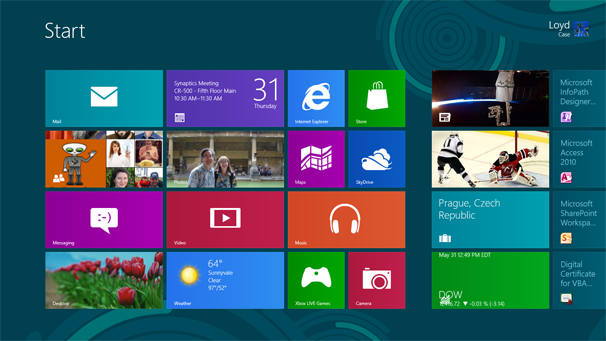 What’s new or improved in Windows 8 Release Preview version:
What’s new or improved in Windows 8 Release Preview version:
New Bing-powered apps, including ones for travel, news, and sports
Improvements to Mail, Photos, and People apps
Increased Start personalization
Better multiple-monitor support
Better Windows Store navigation
New family safety and security functionality
Enhanced touch support for Internet Explorer 10How to download and install Windows 8 Release Preview
Go to the Windows 8 Release Preview download page to enter your email and country region, check the agreement box, and then click the button to download Windows 8 Release Preview version.Running this application automates most of the set-up process, and selects the appropriate version of the preview for your machine. These must be turned into installation media that are burned to a DVD drive or copied to a USB flash drive in order to complete the install. That’s the installation process in a nutshell. As this is preview software, so keep mission critical work off your test PC.
Requirements of installing Windows 8 Release Preview
1. Microsoft advises users to not install the operating system on a computer used for day-to-day work, as there’s also no going back without wiping your hard drive.2. You can’t downgrade from Windows 8 since it cannot access the recovery partition of your hard drive. If you need to downgrade, ensure you have recovery disks readily available.
3. You can upgrade to the Release Preview if you are already running Windows 8 Consumer Preview or Developer Preview. But you cannot keep any of your files.
4. A processor with a clock speed of 1GHz or greater, 1GB (32-bit version), or 2GB (64-bit version) of RAM, at least 16GB (32-bit) or 20GB (64-bit) of available hard drive space, and a graphics card that supports DirectX 9 with a WDDM driver are required to run Windows 8 Release Preview on your test computer.
Other features for your selection include: multitouch support, Internet access, and a screen resolution of at least 1024 pixels by 768 pixels, etc.
займ на карту rusbankinfo.ru
-
A wish list of changes for Windows 8 Release Preview on the early June release event
Posted on April 28th, 2012 No commentsMicrosoft has released several versions of its latest Windows 8 operation system to prepare for the official operation system release, which is said to be in this October, like the Developer Preview and Customer Preview versions. Days ago, the company officially announced that the latest pre-release version of the Windows 8 operating system, Windows 8 Release Preview, will become available during the first week of June, a Microsoft executive said Tuesday in Tokyo. “Announce…Windows 8 Release Preview first week of June. Here’s the announce from Japan’s Windows 8 Dev Days #thankyou”, the company wrote on Twitter. The Windows 8 “Release Preview” will be the most complete version to date of Windows 8, said Steven Sinofsky, President of Windows and Windows Live Division. He spoke at Microsoft’s Windows Developer Days, an event to teach developers about Windows 8. No doubt, the Windows 8 Release Preview would be a feature-completed version of this OS, requiring only bug fixes before the final version out. Then, what are the features in Windows 8? Let’s take a look at what features would be included or changed in Windows 8 Release Preview.
Readopt Start button or any hint button like this
There are a lot of people who have been used to Windows operation system with Start button. Many people would get lost and don’t know what to do and how to operate the computer if there is not a Start button or any sort of guidance on how to navigate the Windows 8 desktops. Watching the video of Chris Pirillo’s father trying to use Windows 8, the company might get to know how real people use Windows 8 without a Start button or anything like that. Thus, the company is supposed to readopt Start button to make operating more user friendly.Enhanced Multi-Monitor support
A better built-in support for multi-monitor is anticipated in Windows 8 Release Preview version. The existing situation is that you can only choose one “main taskbar” to open the Start menu and then run metro-style apps. It would be quite easy for your mouse to jump to the next screen when hitting the corner of screen without a proper Start menu. This would make it inconvenient for operating.Keep Metro Contained
For the most part, ignoring the Metro interface of Windows 8 is easy, especially if you think of the new Start menu as a full-screen version of the pop-up start button. The one glaring exception is when you want to open a photo, video or audio file on the desktop, and Windows 8 boots you back to its Metro-style media players. You can change the default programs for these files, but that’s a hassle.Adopt better Tablet App Switcher
Windows 8 would allow Windows 8 tablet users to fast switch apps, but still too sloppy. When you drag a finger from the left side of the screen, one of your recent apps slides in, but you don’t have immediate control of which app to appear. To choose from a wider list of recent apps, you must slide your finger back to the left side of the screen, which opens up a sidebar with app thumbnails. The operation of switching tablet apps could be confusing most people. For better user experience, the company is supposed to adopt better tablet app switcher to do this.A Tutorial for Tablets included
With physical Windows button and other icons on the screen, average Windows 8 tablets users will be able to get along with their tablets nicely. But many other useful features of Windows 8 operation system, like sharing, searching, app switching, etc. which are hidden from plain sight, may not that easy for users to operate. To make new users quickly understand and get familiar with the Windows 8 OS, Microsoft will need to get a wonderful user-guide for Windows 8 tablet users to make them full enjoy the interesting and practical features of Windows 8 OS.займ на карту rusbankinfo.ru
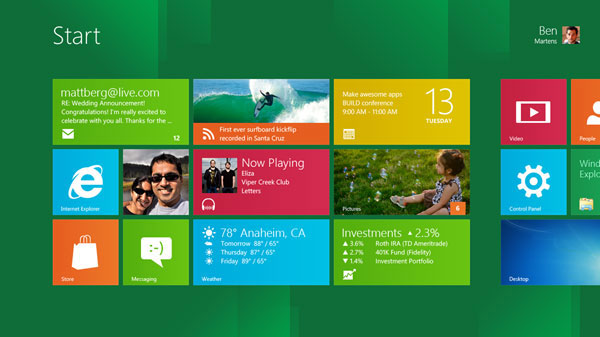
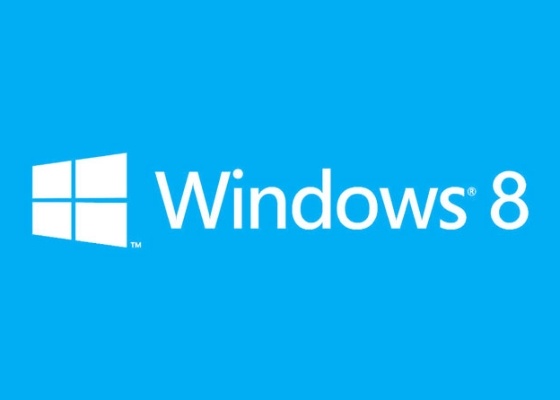
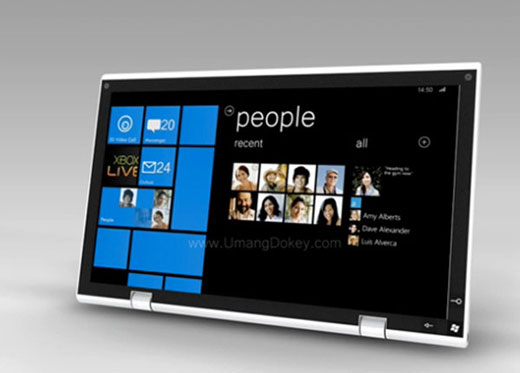






Recent Comments